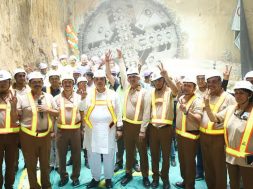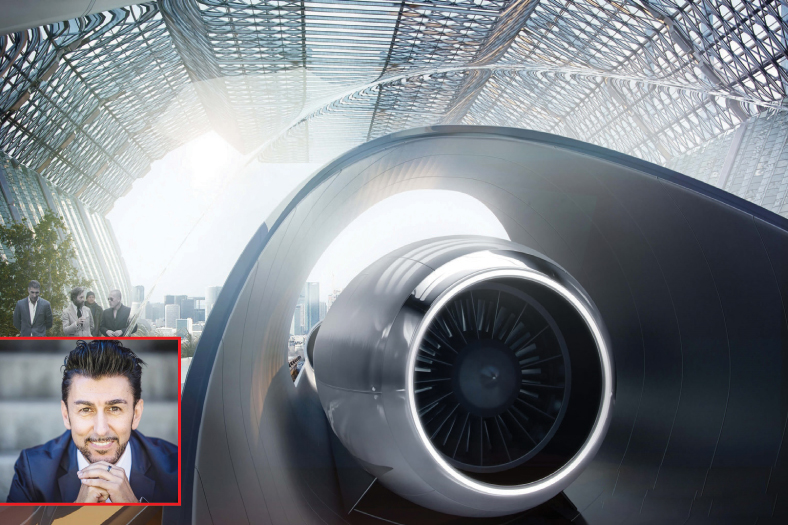What Now? What Next?
Architect Raja Aederi explores the practices in the Indian architecture front
From a predominantly money saving nation, India is yet to come to terms with becoming a money spending nation. Architects, today, are faced with a whole new generation that is exposed to large scale consumerism. Indian market is driven by consumers, who are keen to gleefully grab all the new toys available to them, be it glittering gizmos or swanky apartments. In the grand theatre of architecture, audience has a changed taste! Audience is not able to define that taste and architects are in a quandary, to cater to that taste and are busy creating concoctions that they would like to believe are masterpieces. Just as the new populace of India has got a lot of new toys to play with, Indian architects are also getting visions of technology and products that were hitherto unavailable and were admired by them and are snobbishly casting them, in ethnic Indian idiom and methodology of construction.
Globalisation and disruptive technologies have generated more questions to architects than answers. The present is always a precarious place, sitting between a past that is only partially understood and a future that is unknown. The saving grace, if it can be called one, is that international architecture is in grater comatose. Recession driven international economy has driven architects of arguably great reputation to plan a draft of client’s money, rather than drafting plans of project.
Comparably stable markets of India and China have enticed beleaguered international architects, to dole away morphed digitised concepts irrelevant to Indian shores and to our developers and builders who smartly utilise the tag of ‘world renowned International architect’, to sell their product. The deal is to get a ‘voriginal’ concept to turn into a ‘virginal concept’, garnish it with the ever reliable ‘Vaastu’ and sell it to clients, who are ‘horny’ for something they saw in the US. This is a huge progress for us! The flip side to this otherwise disturbing trend is the great influx of material and technology availability. Architects, today, are able to explore and experiment with products that are flexible to the needs of creativity. They are able to unleash their creative juices (no pun intended) on the unsuspecting victims!
The greatest difference between the developed countries and India is the lack of focus on infrastructure development. Typically, we are enamoured by the high profile water closet, little realising the poor sewerage connections, water supply, etc. To counter this, the architects and the builders have come up with a solution to construct campuses, with self sufficient infrastructure systems and live in islands. Little is being done in the implementation of urban or rural infrastructure. Most of it is presented in our ‘Bhawans’ in Delhi and gets tied up in knots in red tape, or even when let out gets shackled in corruption.
Our modernism should not be limited to utilising form factors that are mere exuberant statements, while we are still caught up with the fear of unknown and insecurity in business. Seemingly glittering promise of reorienting one’s door to Vaastu and blind faith have always been bane for wholesome, qualitative progress. It is time we shun these dogmas and focus on educating the educated. Surprisingly the poorer sections rely primarily on realistic and pragmatic solutions.
The quality of construction and methods of construction are probably an area that needs sharp focus. Automation at construction site, if implemented, would bring India to international arena. We are dependent on construction methods that are, by and large, caricatures of what should be or could be. Our technical excellence is entrenched in the gift to mankind – THE JUGAAD, (Innovative and creative solution to get out of a situation with available resources).
It is, therefore, necessary to look at the consortium that delivers the product consisting of the client, architect and contractor to share a common goal of excellent product delivery. The balancing act of the architect between the client and the contractor is currently hilarious than productive. Each protagonist in this multi-act play has his/her own agenda and lines. Rarely does one see one architect flying over the cuckoo’s nest.
Over the years, our architects have learnt to be pragmatic about the system and the art of mix and match, presenting remix versions of their creations to the clients, who are probably more lost about what they want. As revealed by a minister, I dare say that every project in India is like a Punjabi wedding! To a great extent, this method of chaotic disorder in everything we do is ingrained in our psyche and we feel uncomfortable, if in a project everything works like clockwork, from concept till handing over.
Is there a road map to sorting this out? Can architects initiate and sow the seed of order, in this discipline? It can start with responsible innovation. Architects have greater responsibility to the society in general because their creation dictates the way people live, work and move. Hence a responsible architect should generate a solution that is conducive and satisfying to the client and produce a positive impact on the surroundings, society and environment. However, it requires a collaborative work. All the collaborators in this act need to be committed to a greater cause. One has to be business savvy, no doubt. It is also pointless to blame the system, government and politicians. It is possible to work within the system and be creative and responsive to the needs of the society.
Cookie Consent
We use cookies to personalize your experience. By continuing to visit this website you agree to our Terms & Conditions, Privacy Policy and Cookie Policy.






